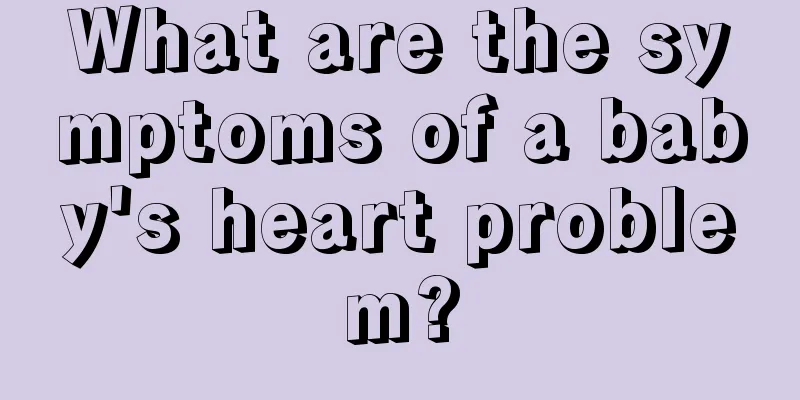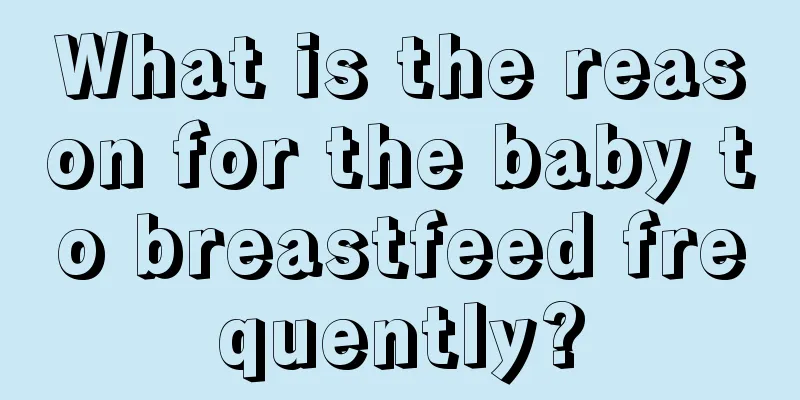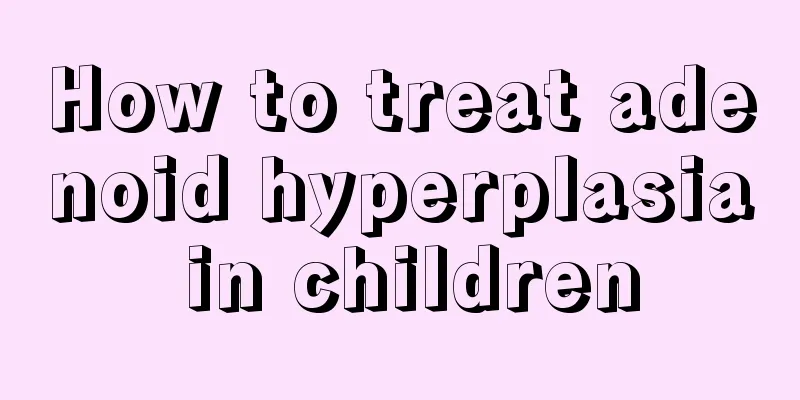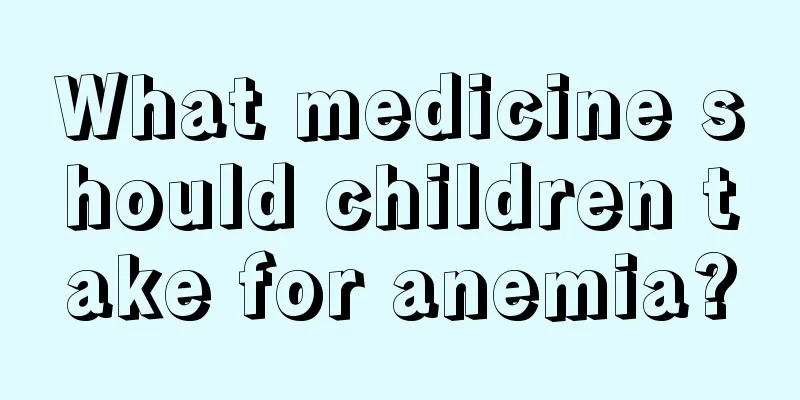What are the symptoms of a baby's heart problem?

|
Every baby is the hope and future of a family from the moment he is born. Mom and dad hope that their baby can grow up healthy and happy. However, there will always be various difficulties and setbacks in the baby's growth process. Heart disease is one of the difficult problems to solve. So what are the symptoms of a baby's heart problem? Let’s take a look at it together. What are the symptoms and manifestations of congenital heart disease in babies? The exact cause of congenital heart disease has not yet been determined. It is mainly a group of congenital malformations caused by abnormal cardiovascular anatomical structure due to abnormal development or developmental disorders of the heart and great blood vessels in the early embryo. Includes dozens of simple to complex developmental abnormalities of the heart or great blood vessels. The incidence of congenital heart disease in infants has remained high. It is worth noting that more than 100,000 babies born each year suffer from congenital heart disease. Congenital heart disease includes cardiovascular malformations such as atrial septal defect, ventricular septal defect, patent ductus arteriosus and tetralogy of Fallot. The severity of congenital heart disease is mainly related to the anatomical location, size and degree of heart malformation. Many infants' congenital heart diseases are not diagnosed early, and various complications occur during the course of the disease, thus delaying treatment. For example, congenital heart disease complicated by menopausal syndrome and Eisenmenger syndrome is a contraindication for surgery, and the opportunity for surgery is often lost, causing many children to die young. It is generally believed that the earlier the congenital heart disease surgery is performed, the better the effect. Therefore, early detection of congenital heart disease symptoms in infants is very helpful for treatment. In order to help parents understand scientific knowledge such as how to detect congenital heart disease in infants early and how to treat it in time, various congenital heart diseases are divided into three categories according to their hemodynamics, anatomical characteristics and shunt directions, and their main symptoms and manifestations of congenital heart disease in infants are described respectively. The first left-to-right heart shunt group often has the following symptoms and manifestations of congenital heart disease in infants: 1. Shortness of breath: In the neonatal or infant period, the child is found to be eager for food due to hunger, but is found to have weak sucking and shallow breathing. He gives up milk and gasps for breath before finishing sucking milk due to shortness of breath. He stops after taking a few sips, feels very tired, and sweats profusely. 2. Recurrent respiratory tract infections or pneumonia: This is the most common symptom and cause of heart murmurs when seeking medical attention. Due to lung congestion, mild respiratory tract infections can easily cause bronchopneumonia, resulting in choking, coughing, and rapid breathing. Some babies have hoarse voices when crying, and even have symptoms such as heart failure. 3. Delayed growth and development: Due to insufficient systemic circulation flow and blood oxygen supply, the growth and development is slower than that of children of the same age, and the weight lag is more obvious than the height lag. 4. Edema: When a child with congenital heart disease is found to have the above symptoms and manifestations, if oliguria and pitting edema in the lower limbs are found, it means that the child's function can no longer compensate and has caused heart failure. This is a very important warning! 5. Cyanosis: Generally, this group of diseases will not cause cyanosis. However, if not treated in time, it will cause complications of pulmonary hypertension and cause blood flow to be shunted from the right heart to the left heart, which may cause cyanosis, also indicating that the opportunity for treatment has been lost. The second type is right heart to left heart shunt group, which is a complex malformation of congenital heart disease in infants. Common clinical symptoms and manifestations are 1. Cyanosis or cyanosis: It is an important symptom of complex congenital heart disease, manifested in cyanosis of the skin and mucous membranes (especially the lips), especially aggravated by crying, making noise, and activity. For example, cyanosis may occur in functional uterine bleeding in the neonatal period. Common diseases include complete transposition of the great arteries and pulmonary atresia. Cyanosis gradually appears and worsens between 6 months and 1 year old in diseases such as tetralogy of Fallot. There are many signs that a baby has heart problems. If you have a newborn baby at home, mom and dad must take good care of the baby. In addition, when you know that your baby has heart disease, you must actively seek treatment. It is best to go to a regular hospital for a comprehensive examination and choose appropriate, scientific and effective treatment methods based on the baby's constitution. |
<<: What to do if your baby has heart problems
>>: What to do if your baby has a hole in the heart
Recommend
What should I do if my newborn has one foot turned outward?
The shape of the feet is an important factor affe...
Symptoms of autumn diarrhea in children
In autumn, the weather is generally cooler and so...
Eight month old baby food schedule
Nowadays, many parents start feeding their childr...
Why do children sweat easily?
Many children have problems with night sweats. It...
Do you know what consequences does premature closure of the fontanelle have?
Because the skull of every newborn is not fully d...
Massage method for swollen eyes of two-year-old baby
In fact, in daily life, the body resistance of a ...
What should children eat to grow?
Most families nowadays have only one child. Every...
Can babies wash their faces with milk?
With the continuous development of living standar...
Is pediatric massage really useful?
Pediatric massage is accepted by more and more pe...
What should I do if my child has a fever every night?
Everyone knows that children have weaker resistan...
How high is the fever when the baby has convulsions?
We all want our children to grow up healthy and h...
Is it okay for babies to drink milk powder while lying down while sleeping?
Milk powder is very important for babies, because...
Treatment for frequent headaches in children
As parents, we often hear our children complain a...
What are some tips for children with stuffy noses?
We know that once a child has a stuffy nose, he w...
Is it good for children to eat dragon fruit?
Dragon fruit is a tropical fruit. It is not only ...









